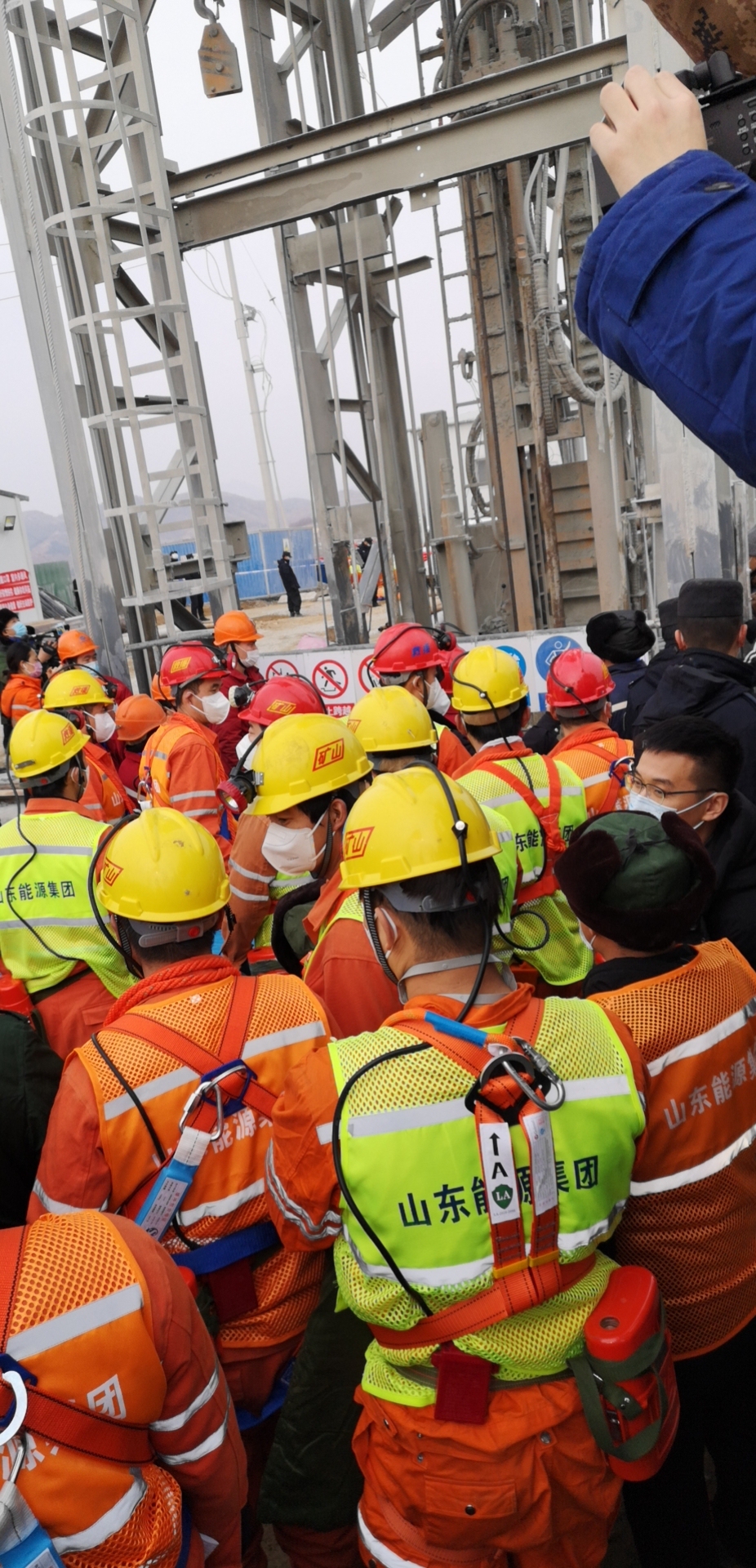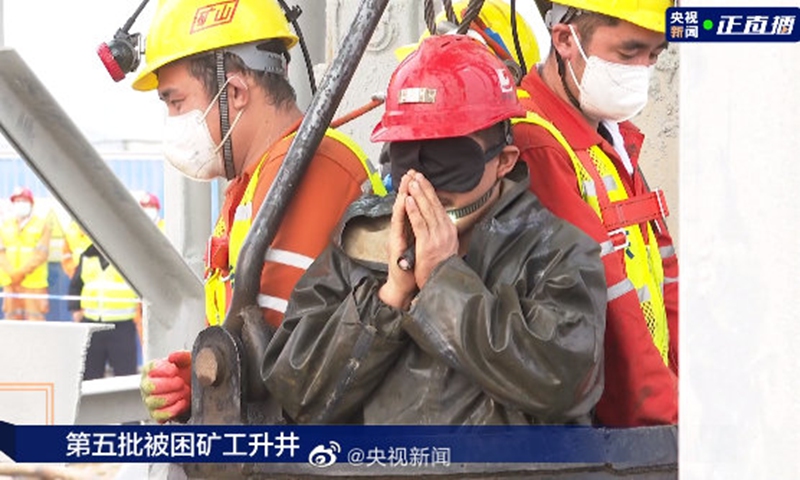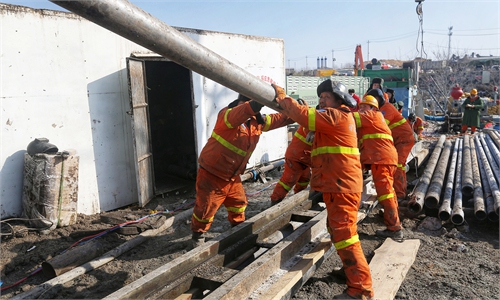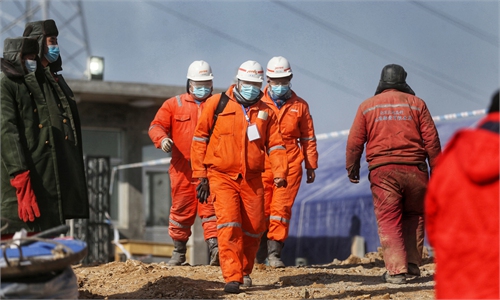All 11 trapped miners who established contact with ground workers in E.China Shandong rescued after two weeks

Rescuers bringing back miners on Jan 24, 2021. Photo: on-site chief rescue expert Du Bingjian
Rescuers have brought to the surface all of the 11 trapped miners who had established contact with ground workers from a goldmine in Qixia, East China's Shandong Province, as of 3:18 pm on Sunday.
The search and rescue operation for the other 10 missing miners is still ongoing.
On Sunday morning, the 14th day of the rescue effort, rescuers found a miner trapped in the Fourth Central Section. He was brought to the surface immediately and was rushed to a hospital, on-site rescuers told the Global Times.
Previously, all the miners were reported to have been trapped in the Fifth Central Section and the Sixth Central Section.
Three of the 10 miners trapped in the Fifth Central Section who established contact with ground rescuers were later brought to the surface as of 1:32 pm on Sunday, chief on-site rescue expert Du Bingjian told the Global Times on Sunday afternoon. Seven more were rescued later.
Up until Sunday morning, the clearance work encountered great difficulties, but then a huge obstacle blocking the well suddenly fell to the bottom of the shaft, allowing rescue work to take a big step forward, Du said.
"After the obstacle fell to the bottom of the shaft, the rescue team started to bring up the miners and suspended drilling, so it is currently unclear when the rescuers will reach the Sixth Central Section where the missing miners are believed to be," Du told the Global Times.
The goldmine explosion took place on January 10. A total of 22 miners were trapped underground, but the accident was only reported to local authorities 30 hours later. Top rescue teams and equipment were quickly sent to the city for all-out rescue efforts.

Photo: CCTV
After contact was restored with the trapped miners, the public had been hoping for a miracle, like the one that took place in Chile in 2010, where 33 miners trapped 700 meters underground were all rescued after 69 days.
However, the accident in Qixia was very different from the Chile mining accident a decade ago, making the rescue options and difficulties far different, Du told the Global Times in an earlier interview.
Both rescue teams resorted to drilling but the Shandong goldmine's geographical and tunnel conditions made clearing the blockages and draining the underground extremely difficult, Du noted.
"In the Chilean mine rescue, the miners underground helped to clear the shaft during the rescue process, which made it possible to drill down quickly," Du said. "In this accident in Shandong, the miners were unable to help because the explosion occurred far from where they were located."
Chile and some other countries require food and other supplies to be stored underground in mines in case of emergency. The Chilean miners managed to get to the place where the emergency supplies were stocked. In the Shandong case, there was no stored food or water, and the miners lost strength quickly before initial contact was established with the surface.
Du explained that many of China's mines are small and likely to be abandoned after a few years of mining, so few maintain underground life capsules, which are costly to build and maintain given the rich aquifer underground.
Explosions in gold mines are far less frequent than in coal mines, because there is usually little flammable gas associated with gold. Explosions in gold mines occur mostly because of the improper blasting operations in the mining process, experts noted.
The cause of this accident has not yet been identified.
The National Mine Safety Administration under the Ministry of Emergency Management has ordered a nationwide inspection of all mines lasting until March. The checklist includes production and safety equipment, proper handling of goods, routes and supplies for emergency evacuation.
Due to the delay in reporting the incident, the legal person of the company was detained and the officials responsible removed from their posts.
Shandong provincial authorities set up an investigation team on the incident, and they vowed not to let go a single person responsible.



